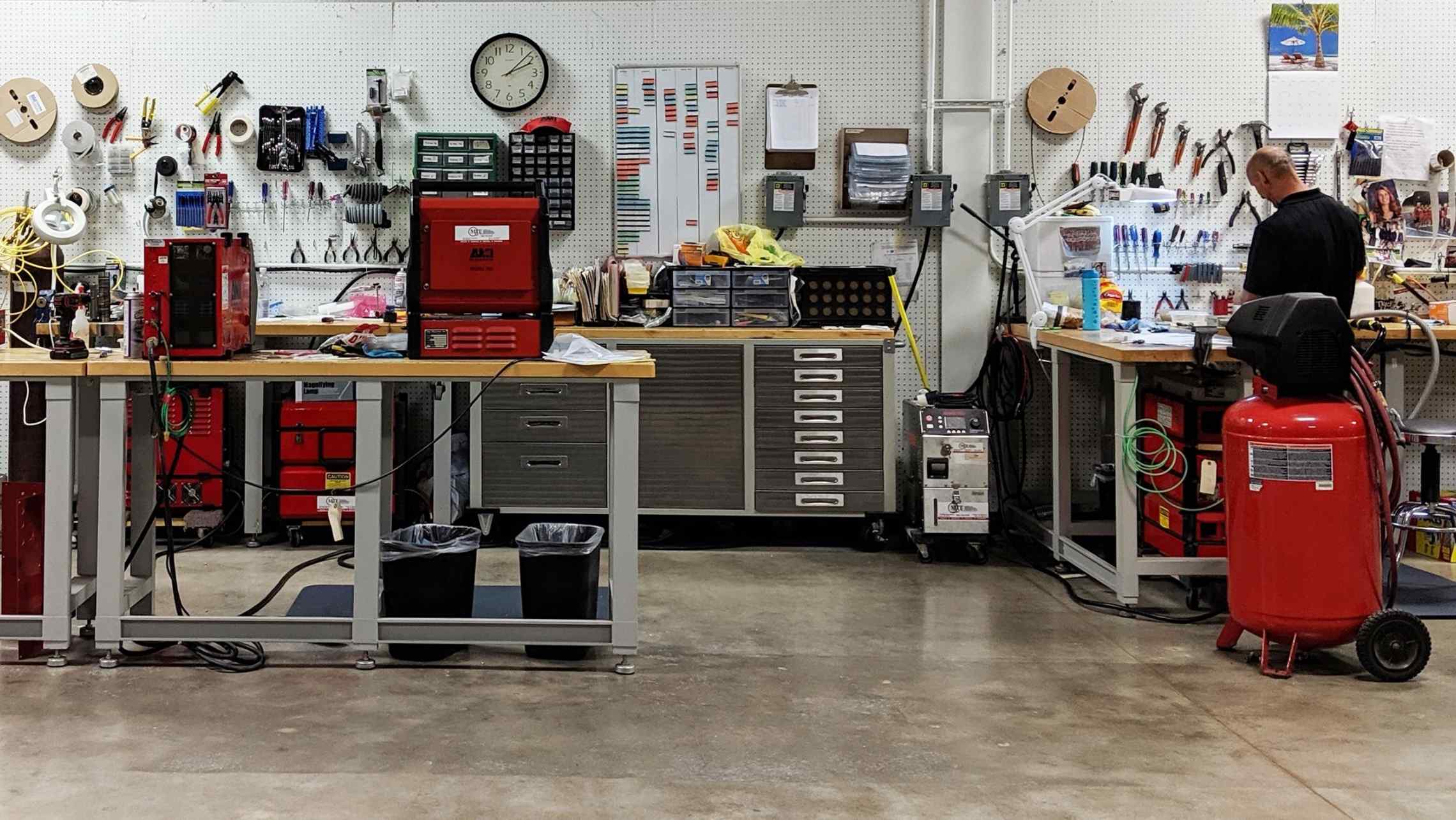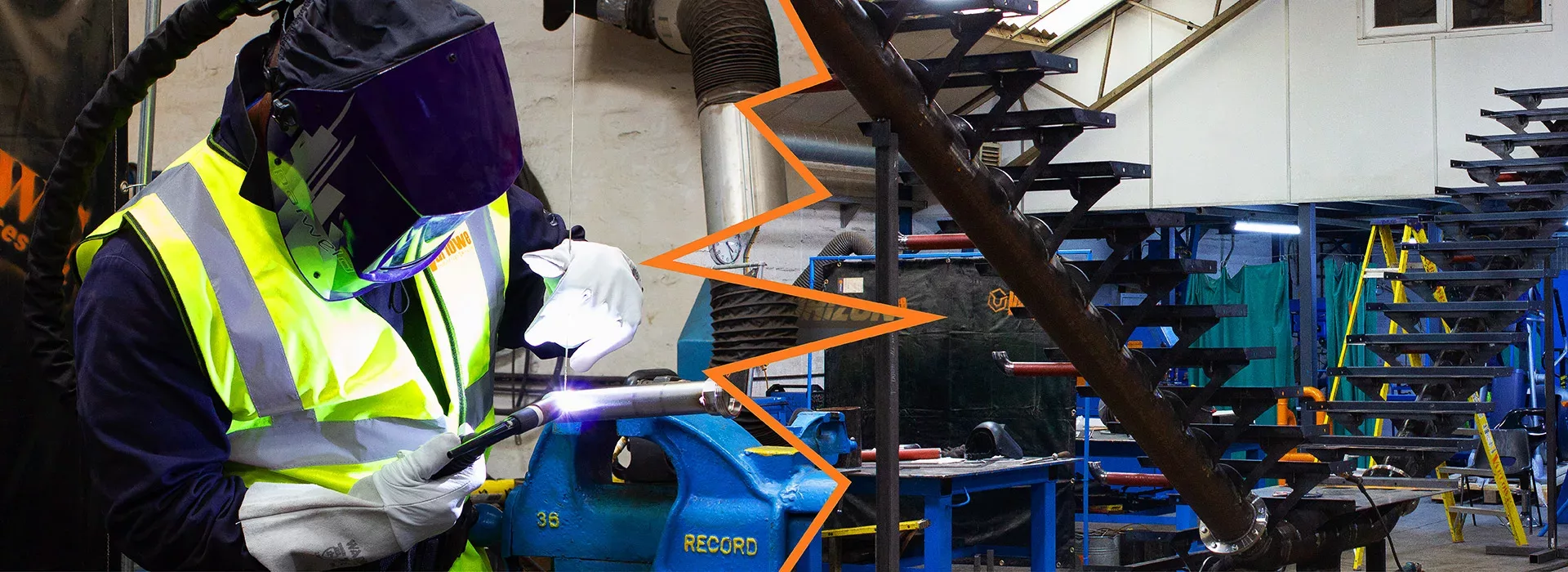Common Welding Repair Service Issues and Just How to Address Them Effectively
Welding repairs commonly experience a variety of problems that can threaten the stability of the final product. Common issues consist of poor penetration, porosity, and imbalance, to name a few. Each defect presents distinct obstacles that call for certain strategies for resolution. Recognizing these problems is necessary for welders intending to improve their outcomes and abilities. This conversation will explore these typical welding repair service issues and efficient methods to resolve them.
Insufficient Infiltration
Poor infiltration occurs when the weld steel falls short to completely fuse with the base material, leading to weak joints and potential structural failures. This issue often originates from inadequate warmth input, inaccurate electrode angle, or improper welding rate. Welders may run into inadequate infiltration because of a mistake of the required parameters for a certain product thickness or kind. In addition, contamination on the base material's surface area can prevent reliable bonding, worsening the trouble. To resolve inadequate infiltration, welders ought to ensure proper settings on their devices and preserve a tidy work surface. Normal assessment of welds is recommended to identify any type of shortages early, permitting for timely corrections and the prevention of compromised structural stability in welded assemblies.
Porosity
Porosity is a typical issue in welded joints that materializes as small gas bubbles entraped within the weld steel. This flaw can endanger the stability of the weld, causing lowered stamina and potential failing under anxiety. Montana Mobile Welding and Repair Welding. Porosity typically emerges from contamination, wetness, or inappropriate welding strategies, which allow gases to get away right into the liquified weld pool. To deal with porosity, welders should ensure correct surface prep work, keep a tidy workplace, and utilize ideal welding criteria. In addition, choosing the right filler product and shielding gas can mitigate gas entrapment. Normal examination and screening of welds can assist recognize porosity early, guaranteeing prompt rehabilitative activities are taken, thus protecting the top quality and dependability of the bonded framework
Misalignment
Misalignment in welding can arise from various aspects, including incorrect setup and thermal growth. Understanding the origin is essential for reliable resolution. A number of modification techniques are readily available to realign components and assure architectural integrity.
Sources of Misalignment
Welding imbalance usually comes from a variety of underlying issues that can jeopardize architectural stability. One main cause is inappropriate fit-up of components prior to welding, which can cause gaps and irregular surface areas. Variations in thermal growth during the welding procedure can also cause distortion, specifically if the materials being signed up with have various coefficients of development. Additionally, poor securing and fixturing might stop working to hold elements safely in area, leading to activity throughout welding. Poorly maintained equipment, consisting of welding devices and tools, may present incongruities in the weld grain, further contributing to imbalance. Lastly, operator error, stemming from insufficient training or experience, can additionally play a considerable duty in creating misaligned welds.
Modification Strategies Available
Attending to misalignment effectively requires a combination of restorative techniques tailored to the particular issues available. One usual method is the usage of components or jigs to hold elements in the appropriate placement throughout welding, ensuring consistent placement. Additionally, pre-heating the products can help in reducing distortion and enhance fit-up. For considerable imbalance, mechanical realignment techniques, such as using hydraulic jacks or clamps, can be employed to fix the setting prior to welding. Post-weld warm treatment might likewise be necessary to alleviate tensions brought on by misalignment. Lastly, careful evaluation and modification during the arrangement phase can avoid misalignment problems from becoming substantial troubles, advertising a smoother welding procedure and enhancing general architectural stability.
Distortion
Distortion is an usual difficulty in welding that can occur from different elements, including irregular heating & cooling. Understanding the reasons for distortion is important for executing reliable avoidance strategies. Addressing this issue not only boosts structural stability yet also enhances the total quality of the weld.
Reasons of Distortion
When subjected to the extreme warm of welding, materials typically undergo adjustments that can lead to distortion. This sensation mainly emerges from thermal expansion Visit This Link and tightening throughout the welding procedure. As the weld area heats up, the product expands; upon air conditioning, it acquires, which can produce interior anxieties. Additionally, unequal home heating across a workpiece can exacerbate these anxieties, resulting in bending or flexing. The kind of product also plays a considerable duty; metals with varying thermal conductivity and coefficients of expansion might react differently, resulting in unforeseeable distortions. Additionally, bad joint style and inadequate fixturing can add to misalignment throughout welding, enhancing the probability of distortion. Understanding these reasons is crucial for effective welding repair work and prevention approaches.
Avoidance Techniques
Effective prevention strategies for distortion during welding concentrate on managing warm input and guaranteeing proper joint layout. Maintaining a regular warmth input helps to lessen thermal development and tightening, which can result in distortion. Using techniques such as pre-heating the work surface can also reduce the temperature gradient, advertising consistent home heating. Additionally, choosing ideal joint layouts, such as T-joints or lap joints, can boost stability and reduce anxiety concentrations. Applying correct fixturing to safeguard the workpieces in position better aids in preserving placement throughout the welding process. Ultimately, staggered welding sequences can disperse warmth a lot more uniformly, stopping local distortion. By using these strategies, welders can considerably lower the probability of distortion and boost the total quality of their welds.
Fracturing
Cracking is a common concern experienced in welding repair services, often resulting from various elements such as inappropriate cooling rates, product selection, or poor joint prep work. The event of fractures can substantially compromise the stability of the weld, resulting in possible failings during procedure. To resolve this concern, welders have to initially evaluate the source, ensuring that products work and appropriately chosen for the details application. Additionally, controlling the air conditioning rate during the welding procedure is important; rapid cooling can induce tension and result in breaking. Correct joint style and preparation likewise add to reducing the threat. Applying these strategies can improve weld quality and sturdiness, ultimately minimizing the probability of cracking in finished weldments.

Insufficient Fusion
A significant concern in welding repair services is insufficient fusion, Check This Out which occurs when the weld steel does not adequately bond with the base material or previous weld passes - Montana Mobile Welding and Repair Belgrade Fabrication. This defect can result in weak points in the joint, potentially jeopardizing the integrity of the welded framework. Factors adding to incomplete fusion consist of insufficient heat input, improper welding method, and contamination of the surface areas being signed up with. To resolve this concern properly, welders need to assure appropriate pre-weld cleansing and surface prep work, in addition to adjust their welding specifications to achieve adequate infiltration and fusion. Regular assessment during the welding process can likewise aid identify insufficient combination early, allowing for timely restorative steps to enhance the overall top quality see this here of the weld
Overheating
While welding repair work can boost structural integrity, overheating offers a substantial obstacle that can result in material deterioration. Too much heat during welding can alter the mechanical residential or commercial properties of metals, causing decreased strength, boosted brittleness, and bending. This phenomenon is particularly vital in high-stress applications where architectural integrity is extremely important. Determining overheating can include aesthetic inspections for staining or distortion, as well as keeping track of temperature level during the welding process. To reduce the risks related to overheating, welders should employ appropriate strategies, such as regulating warm input, adjusting traveling speed, and making use of appropriate filler materials. Additionally, implementing pre- and post-weld warmth therapies can assist restore product residential or commercial properties and boost the total high quality of the repair, guaranteeing long-lasting performance and safety and security.
Often Asked Inquiries
What Are the Common Indications of a Welding Defect?

Exactly How Can I Check My Welds for High quality?
To check welds for high quality, one can utilize aesthetic examinations, ultrasonic screening, and radiographic techniques. Each technique assures architectural integrity, identifies defects, and confirms adherence to specified standards, inevitably enhancing the dependability of the welded joints.
What Safety and security Preventative Measures Should I Take While Welding?
When welding, one need to focus on security by putting on appropriate individual protective tools, making certain correct air flow, protecting flammable materials away, keeping a clean workspace, and knowing environments to avoid mishaps and injuries.
Can I Repair a Weld Without Redesigning the Entire Joint?
Fixing a weld without redesigning the entire joint is feasible, depending on the damages (Belgrade Fabrication). Techniques such as grinding, adding filler product, or making use of a welding process can efficiently attend to certain defects while preserving the bordering structure
What Tools Are Crucial for Reliable Welding Repair Works?
Crucial tools for effective welding repair services consist of a welding device, wire brush, grinder, safety equipment, clamps, and filler materials. Each tool plays an essential duty in making sure quality and security throughout the repair work procedure. Porosity usually emerges from contamination, moisture, or improper welding strategies, which permit gases to leave right into the liquified weld pool. Improperly conserved devices, consisting of welding devices and tools, may present disparities in the weld bead, additional contributing to imbalance. When subjected to the extreme warm of welding, products frequently undergo adjustments that can lead to distortion. Cracking is a common problem run into in welding repairs, often resulting from different factors such as incorrect air conditioning rates, product option, or poor joint prep work. A significant concern in welding fixings is insufficient blend, which takes place when the weld steel does not adequately bond with the base material or previous weld passes.